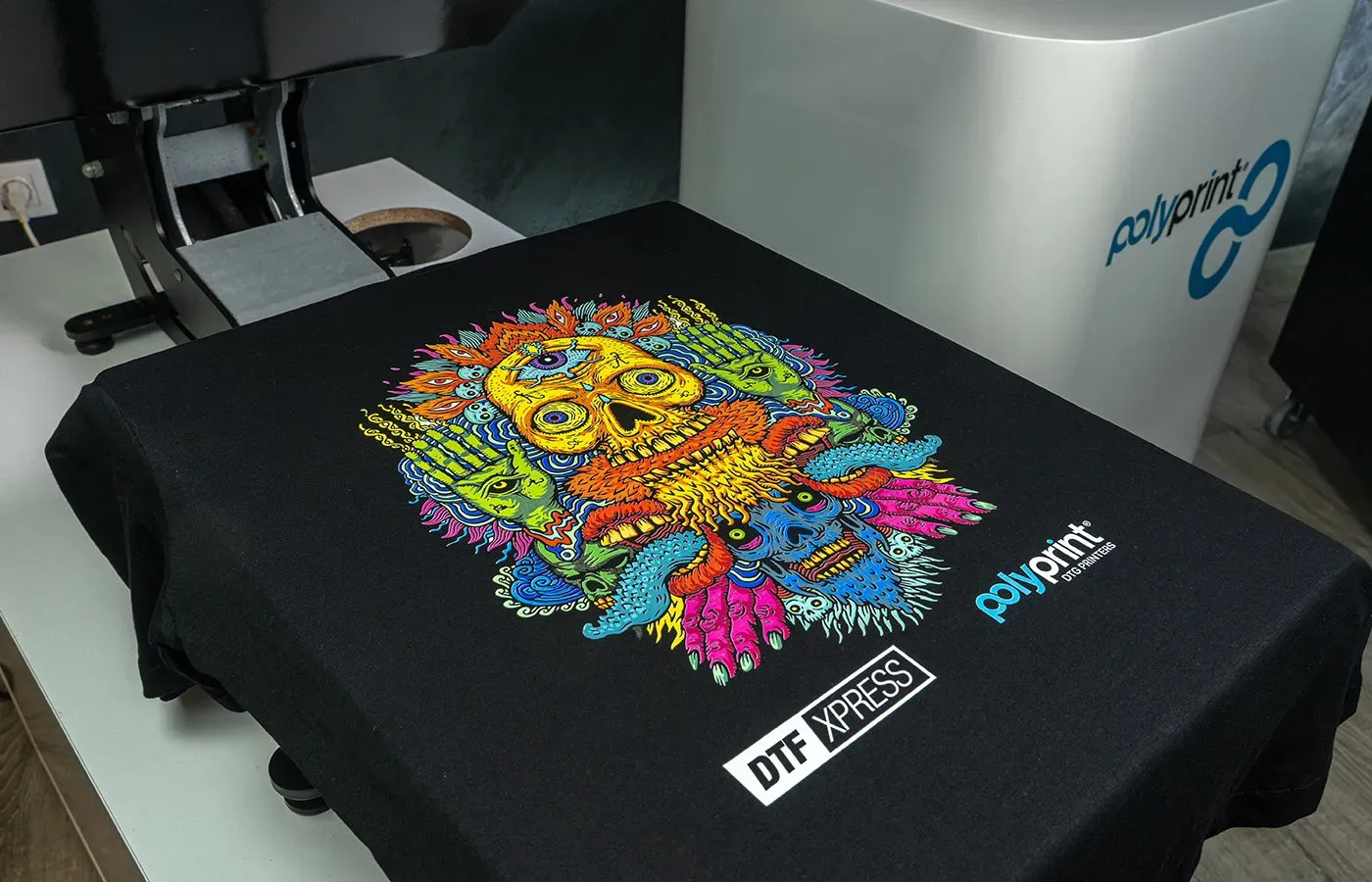DTF Transfers: Tips and Tricks for Perfect Prints
DTF transfers, or direct to film transfers, have transformed the landscape of custom printing, providing a seamless way to achieve vibrant, high-quality designs on various fabrics. As the demand for personalized apparel and promotional items continues to rise, understanding DTF printing is crucial for both novices and experienced printers alike. This innovative method not only enhances print quality but also offers versatility across different materials, making it an increasingly popular choice. In this article, we will delve into essential tips for perfect prints, covering everything from heat press techniques to choosing the right inks. Whether you’re looking to refine your skills or embark on your DTF printing journey, you’re in the right place to learn and excel.
In the realm of modern custom printing, techniques such as heat transfer printing and film printing methods have become essential for producing high-definition imagery on textiles. DTF printing, specifically, allows for intricate designs and provides vibrant color reproduction, ideal for creating standout apparel and merchandise. As professionals and hobbyists alike seek to push their creative boundaries, mastering the nuances of direct to film printing can significantly elevate the overall print quality. The following sections will introduce practical tips and recommended practices to help you navigate the complexities of DTF transfers, ensuring optimal results every time.
The Basics of DTF Transfers: A Revolutionary Printing Technique
Direct to film (DTF) transfers represent a groundbreaking evolution in the printing landscape, allowing creatives and businesses to produce intricate designs with remarkable efficiency. This method utilizes a specialized film that captures vibrant graphics, which can then be applied to various fabric types through heat and pressure. One of the standout features of DTF printing is its ability to yield superior print quality, offering deeper colors that pop and sharp details that are often lost in traditional printing methods.
The versatility of DTF transfers is another key advantage, particularly in a market increasingly demanding custom prints. Unlike traditional screen printing, DTF allows for seamless applications on both light and dark materials, expanding the creative possibilities for designers. From custom t-shirts to promotional merchandise, DTF printing is becoming the go-to option for many due to its cost-effectiveness, especially for small to medium run productions.
Essential Tips for Achieving Perfect DTF Transfers
To ensure outstanding results with your DTF transfers, start by choosing high-quality transfer paper that aligns with your printer and ink selection. The right paper is crucial because it has a direct impact on the adhesion and final quality of your prints. Popular brands specifically designed for DTF transfers not only influence the color vibrancy but also help in achieving crisp details that every designer seeks.
Additionally, maintaining optimal printer settings can significantly enhance the outcome of your prints. It is vital to adjust the resolution according to the type of film and ink you are using, ensuring proper curing and color matching. Neglecting these settings may result in poor print quality and unprofessional results, which can be detrimental to your printing business.
Heat Press Techniques: How to Get It Right Every Time
The heat press application process is critical in DTF printing and can make or break the success of your transfers. Begin by setting your heat press to the appropriate temperature, generally around 320°F, and adhere to the time recommendations specified by your transfer paper. Firm, even pressure is equally necessary to ensure that the design makes a reliable bond with the fabric. Too little pressure can cause improper adhesion, while excessive pressure might smudge the ink.
Don’t forget to allow the transfer to cool off slightly before peeling away the film. This step is vital as it helps set the design into the fabric, ensuring longevity and durability. Once peeled, applying heat for another few seconds can further lock in the image, preventing future lifting during washes.
Common Mistakes in DTF Transfers and How to Avoid Them
Despite the simplicity of DTF printing, several common mistakes can undermine the quality of your output. One pivotal error is neglecting to preheat your fabrics, which is essential for evaporating any moisture. This simple step can dramatically enhance the adhesion of your transfer and prevent potential failures in your prints.
Another frequent oversight is the lack of regular maintenance of printing equipment. Clogged nozzles or dirty print heads can lead to print defects and loss of detail. Implement a consistent cleaning schedule to ensure that your machinery is in top shape, which will help maintain the high quality of your printed designs.
Testing Your DTF Transfers: Best Practices for Consistency
Testing is a critical phase in the DTF printing process, and should never be overlooked. Always conduct test prints on similar fabrics to ensure that the settings you have are optimal for the specific materials you are working with. This practice allows you to fine-tune your printer configurations and is significant in preventing waste and ensuring that the final product meets your quality standards.
Moreover, don’t hesitate to experiment with different ink setups and pressure levels during your test runs. Centering the output around various designs can offer insights that may be beneficial in full production scenarios. Consistent testing can lead to refinement in your process, ultimately leading to enhanced customer satisfaction and repeat business.
Building Your Brand with High-Quality DTF Prints
In today’s competitive market, providing high-quality DTF prints can be pivotal for building a solid brand presence. As custom apparel becomes more prominent, businesses that can deliver exceptional print quality tend to outshine their competitors. Investing in premium DTF inks and materials not only boosts the end product’s vibrancy but also communicates professionalism and reliability to your customers.
Furthermore, utilizing DTF prints for promotional items or branded merchandise can create memorable connections with your audience. With quality designs and reliable transfers, your brand can gain not only recognition but also respect within your industry. The aesthetic appeal of well-executed DTF prints can turn casual followers into loyal customers.
Frequently Asked Questions
What are DTF transfers and how do they work?
DTF transfers, or direct to film transfers, involve printing designs onto a specialized film, which is then transferred to fabric using heat and pressure. This method allows for vibrant, high-quality images suitable for various types of apparel and materials.
What tips can help improve DTF print quality?
To enhance DTF print quality, use high-quality DTF transfer paper and ink, maintain optimal printer settings, and ensure proper prepress preparation of your designs. Additionally, mastering heat press techniques and applying the right pressure can significantly impact the final print.
How do I choose the right heat press techniques for DTF printing?
For effective DTF printing, set your heat press to about 320°F and apply firm, even pressure for 12-15 seconds. Always follow the specifications of your DTF transfer paper, and remember to allow the transfer to cool briefly before peeling away the film.
What are the benefits of using DTF printing for custom apparel?
DTF printing offers exceptional print quality with deeper colors and fine details, versatility across various fabrics, and cost-effectiveness for small runs. It’s a preferred method for creating vibrant and durable designs on both dark and light materials.
What common mistakes should I avoid when using DTF transfers?
Common mistakes in DTF transfers include not preheating your fabrics, neglecting equipment maintenance, and skipping test prints. Always preheat fabrics to ensure proper adhesion and conduct test prints to guarantee optimal results.
Can I use any ink with DTF transfers, or do I need specific DTF inks?
Using high-quality, compatible DTF inks is essential for achieving vibrant and durable prints. These inks are specifically formulated to ensure smooth transfer and strong adhesion to fabrics, while standard inks may not provide the desired results.
| Key Point | Details |
|---|---|
| Understanding DTF Transfers | A printing method where designs are printed onto a thin film and transferred onto fabric using heat and pressure. |
| Advantages of DTF Printing | – Exceptional Print Quality: Better colors and detail than screen printing. – Versatility: Works on various fabrics, both dark and light. – Cost-Effective: Reduces costs for small runs and personalized items. |
| Key Tips for Perfect DTF Transfers | 1. Choose the Right Transfer Paper 2. Maintain Optimal Printer Settings 3. Prepress Preparation 4. Heat Press Techniques 5. Use Quality DTF Inks |
| Common Mistakes to Avoid | – Not Preheating Fabrics – Ignoring Equipment Maintenance – Failing to Test Prints |
Summary
DTF transfers have become a game changer in the world of custom printing, allowing for enhanced creativity and quality in designs. As you delve into the art of DTF transfers, keep these essential tips and insights in mind. By understanding the process and avoiding common pitfalls, you can unlock the full potential of this innovative printing technique, catering to the diverse needs of your clientele. DTF transfers not only facilitate outstanding print quality but also offer versatility and cost-effectiveness for custom apparel and promotional items. With continuous practice and experimentation, you can elevate your printing prowess and create captivating designs that stand out in the market.





